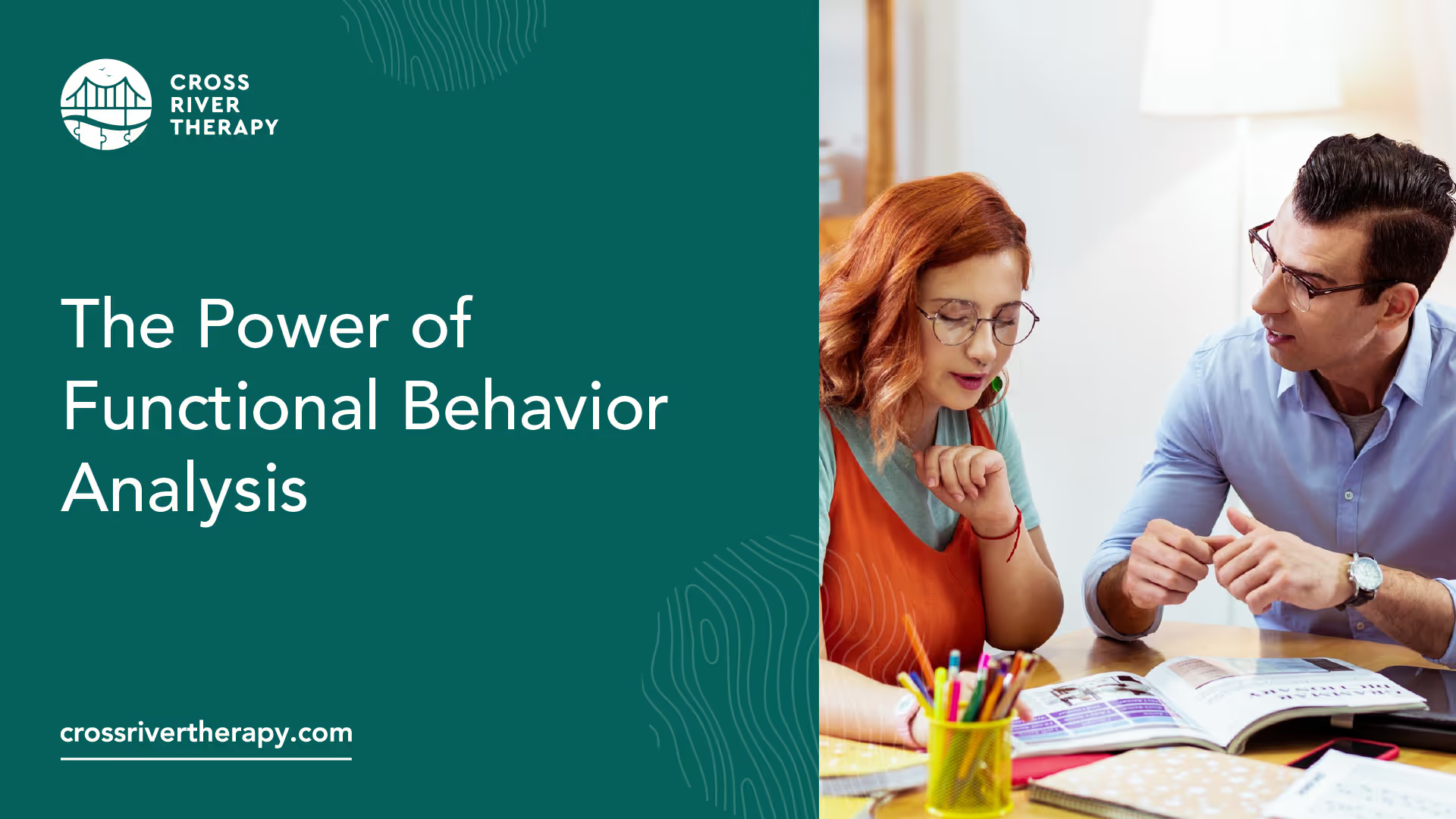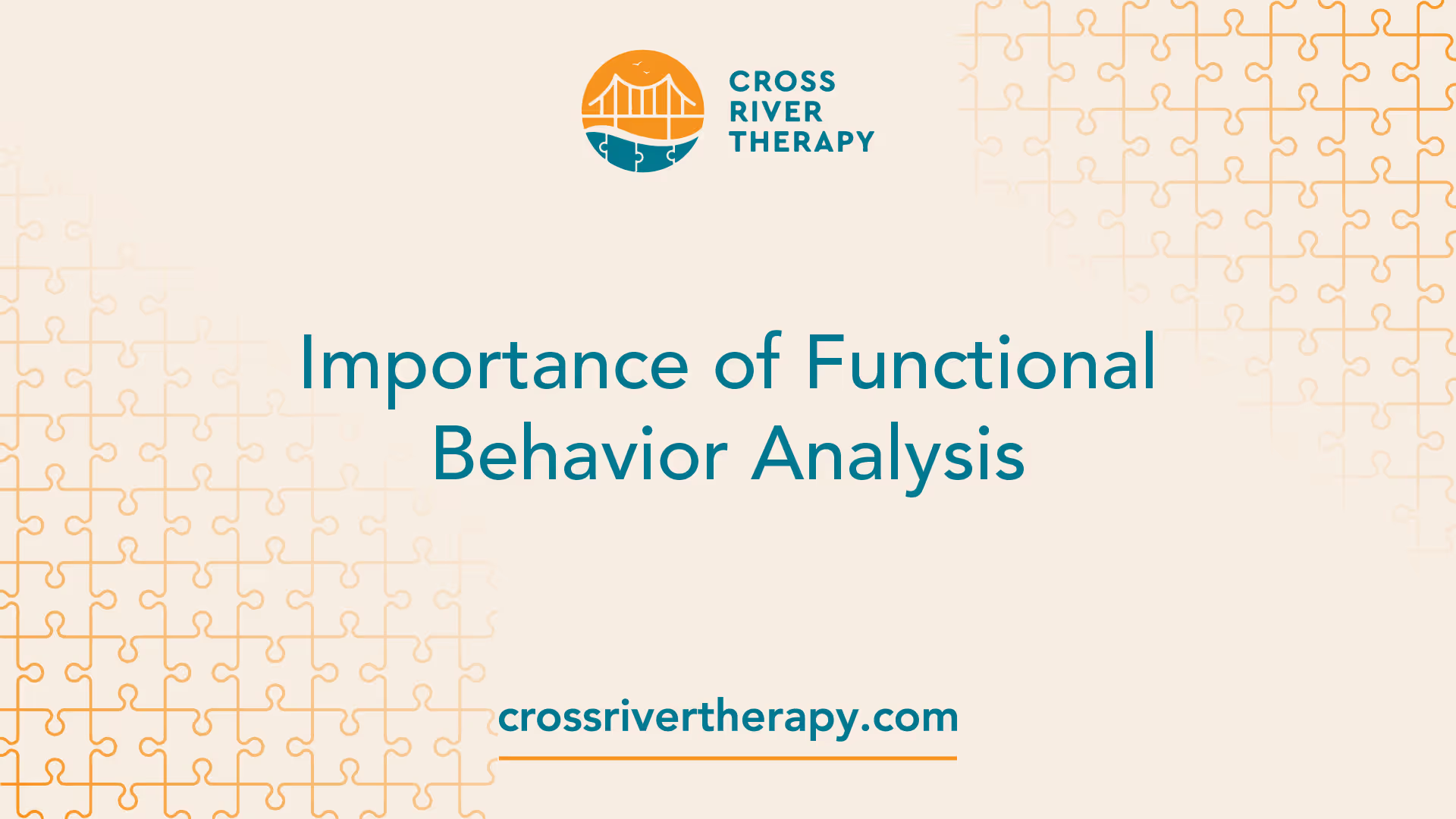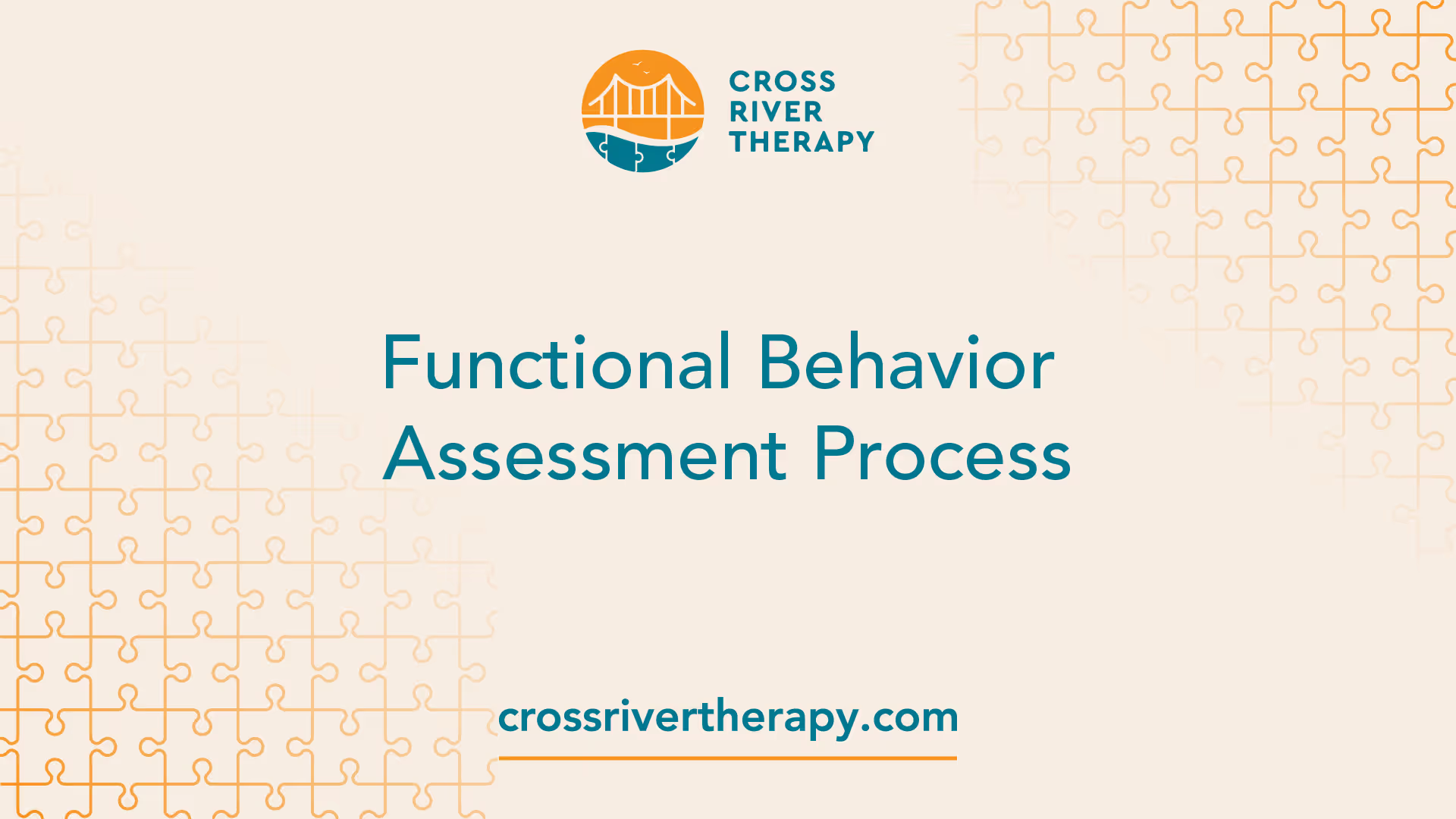The Power of Functional Behavior Analysis
Discover the power of functional behavior analysis in autism care and how it shapes behavior interventions.
Understanding Functional Behavior Analysis
Functional Behavior Analysis (FBA) is a powerful tool used to understand and address problematic behaviors in various settings, including schools and therapeutic contexts. It is particularly beneficial for individuals with autism and other developmental disorders.

Purpose of Functional Behavior Analysis
The primary purpose of functional behavior analysis is to determine the function or purpose of a particular behavior. This understanding can help in designing effective interventions to address the behavior. According to the IRIS Center - Vanderbilt University, an FBA is used to identify the factors that maintain the behavior, providing insights into the reasons behind a student's behavior.
FBAs have been proven to produce desired outcomes across a wide range of settings and student behaviors. They are commonly used as part of a school evaluation for special education, when new behavior concerns arise with children who have an Individualized Education Program (IEP) or a 504 plan, and in certain school discipline situations where federal law requires an FBA in specific circumstances.
Process of Conducting FBA
The process of conducting an FBA involves several steps and is usually carried out by professionals such as behavior analysts, school counselors, and special educators. The initial step involves identifying the problematic behavior to be addressed. This is followed by gathering information about the behavior through direct observation and interviews with relevant people, such as teachers, parents, or the individual exhibiting the behavior.
The information collected is then used to hypothesize the function or purpose of the behavior, which can be to gain attention, escape from a task, gain access to a desired item or activity, or to satisfy a sensory need. The hypothesis is then tested through a series of carefully designed interventions.
The results of the interventions are analyzed to confirm or refute the initial hypothesis. Based on the findings, an intervention plan is created to address the behavior effectively. For more information about functional behavior analysis and how it is used in applied behavior analysis, visit what is functional behavior assessment in aba?.
It's important to note that in situations where basic classroom management techniques and behavioral interventions are ineffective at addressing challenging behaviors, conducting a functional behavioral assessment can provide valuable insights into the student's behavior.
Importance of Functional Behavior Analysis
Functional Behavior Analysis, or FBA, plays a significant role in understanding and modifying challenging behaviors. It is a powerful tool widely used in various settings, from schools to mental health facilities, to provide effective interventions and support for individuals, especially those with autism.

Role in Behavior Interventions
Functional Behavior Assessment is a key component in behavior interventions such as Cognitive Behavioral Therapy (CBT) or Dialectical Behavior Therapy (DBT). These interventions utilize FBA to understand the reasons behind challenging behaviors and then tailor strategies to modify those behaviors [3].
FBA is particularly beneficial when working with nonverbal or autistic children, as it provides a way to understand their behaviors and implement effective interventions without extensive psychoanalysis. You can read more about this in our article on what is functional behavior assessment in aba?
In a school setting, an FBA enables teachers and staff to provide support for students displaying challenging behaviors. By understanding the reasons behind these behaviors, educators can implement interventions to address and modify these behaviors, leading to a more conducive learning environment [4].
Multi-Tiered Systems of Support
Functional behavior assessments are also an integral part of multi-tiered systems of support. These systems provide increasingly intensive and individualized levels of support for behavior. One example of this is Positive Behavioral Interventions and Supports (PBIS), a framework that uses FBA to understand and address challenging behaviors.
These multi-tiered systems of support offer a strategic approach for managing behaviors. They start with universal strategies for all students, then add targeted strategies for students at risk, and finally, individualized interventions for students with significant challenges.
By understanding the causes of challenging behaviors through FBA, educators can craft effective interventions tailored to the individual's needs. This ensures that each student, regardless of their behavioral challenges, receives the necessary support to thrive in their learning environment.
To learn more about this topic, check out our article on what is functional analysis of behavior?
Functional Behavior Assessment Process
The process of functional behavior analysis, which is central to Applied Behavior Analysis (ABA), involves several steps that allow professionals to effectively analyze and address behavioral issues. This process is crucial in managing problematic behaviors and developing suitable interventions.

Gathering Information
The initial stage of the functional behavior assessment (FBA) process involves the gathering of information about the individual's behavior. This process is conducted by a team of education professionals, such as behavior analysts, school counselors, and special educators [2].
There are two assessment methods used in this stage – direct and indirect assessments. Direct assessments refer to instances where behaviors are observed and tracked in real-time. Indirect assessments, on the other hand, involve interviews with teachers, parents, and other significant adults to collect vital information about the behaviors.
The steps for this stage include defining the challenging behavior, gathering and analyzing information, and understanding the reason for the behavior [1]. To learn more about this process, you can visit what is functional behavior assessment in aba?.
Creating Intervention Plans
Once the information is collected and analyzed, the team can then develop appropriate interventions to manage and improve the behavior. These interventions are based on the insights gathered from the FBA and are customized to the individual's specific needs.
The team, which usually consists of teachers, parents, and specialists, will analyze the results of the FBA to develop interventions for the student in the classroom. These interventions are typically added to the student's Individualized Education Program (IEP) if they have one. The team continuously monitors the supports put in place to achieve behavioral goals [4].
It's important to note that the FBA is part of the Individual Education Plan (IEP) under the Individuals with Disabilities Education Act (IDEA) and section 504 of the Rehabilitation Act. This aims to provide access to special education and related services to children with disabilities in an educatively productive environment [5].
In conclusion, the functional behavior assessment process plays a crucial role in understanding and addressing behavioral issues. By gathering relevant information and developing tailored intervention plans, it allows for the effective management of behaviors and contributes to the overall progress of the individual. For more information on this topic, check out what is functional analysis of behavior?.
Functional Behavior Analysis in Education
The application of functional behavior analysis (FBA) in the educational setting is pivotal in understanding and addressing behavior concerns in students, particularly those in need of special education.
School Evaluation and Special Education
Functional Behavior Analysis is often utilized as part of a school evaluation for special education. It comes into play when new behavior concerns arise with students who have an Individualized Education Program (IEP) or a 504 plan, and in certain school discipline situations where federal law requires an FBA in specific circumstances.
An FBA can provide valuable information to determine or verify a disability, which is crucial for obtaining appropriate financial support and educational access for children with emotional or behavioral conditions that create a learning disability [5].
Involvement in Individualized Education Programs
The Functional Behavior Assessment is part of the Individual Education Plan (IEP) under the Individuals with Disabilities Education Act (IDEA) and section 504 of the Rehabilitation Act, aiming to provide access to special education and related services to children with disabilities in an educatively productive environment [5].
The timing of a Functional Behavioral Assessment can work with other efforts to help understand the student's circumstances and can be part of the Individual Learning Plan, the SAT Process, and as confirmation of a disability.
A Functional Behavioral Assessment (FBA) is typically conducted for students in the classroom to understand the reasons behind their behaviors, enabling teachers and staff to provide support and implement interventions to address and modify these behaviors [4].
By including functional behavior analysis as a significant part of the educational process, schools can create an environment that better addresses the diverse needs of students, particularly those with special needs. For more information on functional behavior analysis and its role in applied behavioral analysis, visit our page on what is functional behavior assessment in aba?.
Functional Analysis of Behavior
Functional behavior analysis plays a vital role in understanding and managing behaviors, especially in individuals with autism. This section will delve into how functional behavior analysis is utilized in cognitive behavioral therapy and the importance of objective observation for analysis.
Utilization in Cognitive Behavioral Therapy
Functional analysis of behavior is an essential tool in Cognitive Behavioral Therapy (CBT). The therapist and client work together to break down the behavior chain into its respective parts. The purpose of this analysis is to understand why a desirable behavior works and why undesirable behavior occurs. With this understanding, they can alter parts of the behavior chain to achieve a different outcome.
This approach is particularly useful with young children who are nonverbal or adults who struggle to find insight into the cause of their behaviors. As functional analysis does not rely on self-reports, but on direct observation, it allows the client and clinician to objectively analyze the behavior and develop an effective intervention plan [3].
Functional analysis is also often utilized in Dialectical Behavior Therapy (DBT), proving its versatility and effectiveness in various therapeutic settings. To learn more about the role of functional analysis in behavior therapy, visit our article what is functional analysis of behavior?.
Objective Observation for Analysis
Objective observation is a cornerstone of functional behavior analysis. In this process, the clinician starts with an assessment to identify which habits and behaviors are causing distress in the client. The analysis typically involves determining the ABCs of an event: the antecedent (what happened before the behavior), the behavior itself, and the consequence (what happened after the behavior).
By breaking down the behavior into these components, the client gains a deeper understanding of not only why the behavior is occurring, but also what factors maintain it. Changing the root cause of the behavior can lead to a change in the outcome, making it an excellent tool for clients seeking quick changes with lasting effects.
In the context of autism, especially for nonverbal individuals, objective observation provides a valuable avenue for understanding and managing behaviors. It allows for the development of personalized and effective intervention strategies, contributing to improved quality of life and behavioral outcomes. For more detailed insights into this approach, you can read our article on what is functional behavior assessment in aba?.
To summarise, functional behavior analysis, with its objective observation and application in cognitive behavioral therapy, is a powerful tool in understanding and managing behaviors, particularly in the context of autism. It provides a framework for breaking down behaviors, understanding their causes, and developing effective strategies for change.
Applied Behavior Analysis Techniques
In the realm of Functional Behavior Analysis, there are several techniques used to modify behaviors effectively. These techniques are tailored to the individual's needs and are a key part of Applied Behavior Analysis (ABA). Two such techniques are Discrete Trial Training and Positive Reinforcement.
Discrete Trial Training
Discrete Trial Training (DTT) is a structured method used in ABA to promote learning new skills. It involves breaking down each skill into smaller, teachable parts and teaching each part individually until the entire skill is mastered.
DTT follows a particular sequence:
- The instructor presents a stimulus, for example, a command or question.
- The individual responds.
- The instructor provides a consequence based on the response.
- There is a short pause before the next trial begins.
This sequence is repeated many times, with the goal of helping the individual generalize the learned skill to other contexts and environments. It's used for teaching various skills, including communication, social skills, self-help skills, and academic skills.
Positive Reinforcement Techniques
Positive reinforcement is a cornerstone of ABA. It involves the addition of a reward following a desired behavior, with the intent of increasing the likelihood of that behavior occurring again in the future. The reward, or reinforcer, can be anything that the individual finds motivating.
For example, if a child completes a task correctly, the therapist might give them a sticker as a reward. Over time, the child learns to associate completing the task correctly with receiving a sticker, which motivates them to continue performing the task correctly.
Positive reinforcement can also be used in conjunction with other techniques, such as token economies or reward systems, to promote behavior change across different settings.
The use of ABA techniques like Discrete Trial Training and Positive Reinforcement have been shown to be effective in helping individuals, particularly children with intellectual or developmental disorders. They form an integral part of the functional behavior analysis process.
Remember, the choice of technique depends on the individual's specific needs and circumstances. It's crucial to work with a trained professional who can guide you through the process, ensuring the best possible outcomes. For more information on the principles and application of ABA, refer to what is behavior analysis in ABA.
References
[1]: https://www.understood.org/en/articles/functional-assessment-what-it-is-and-how-it-works
[2]: https://iris.peabody.vanderbilt.edu/module/fba/cresource/q2/p04/
[3]: https://positivepsychology.com/functional-analysis-cbt/
[4]: https://www.cwdcenter.com/blog/367552-what-are-the-benefits-of-a-functional-behavioral-assessment
[5]: https://teach.com/online-ed/psychology-degrees/online-masters-applied-behavior-analysis/functional-behavior-analysis/
[6]: https://www.verywellmind.com/what-is-behavior-analysis-2794865



